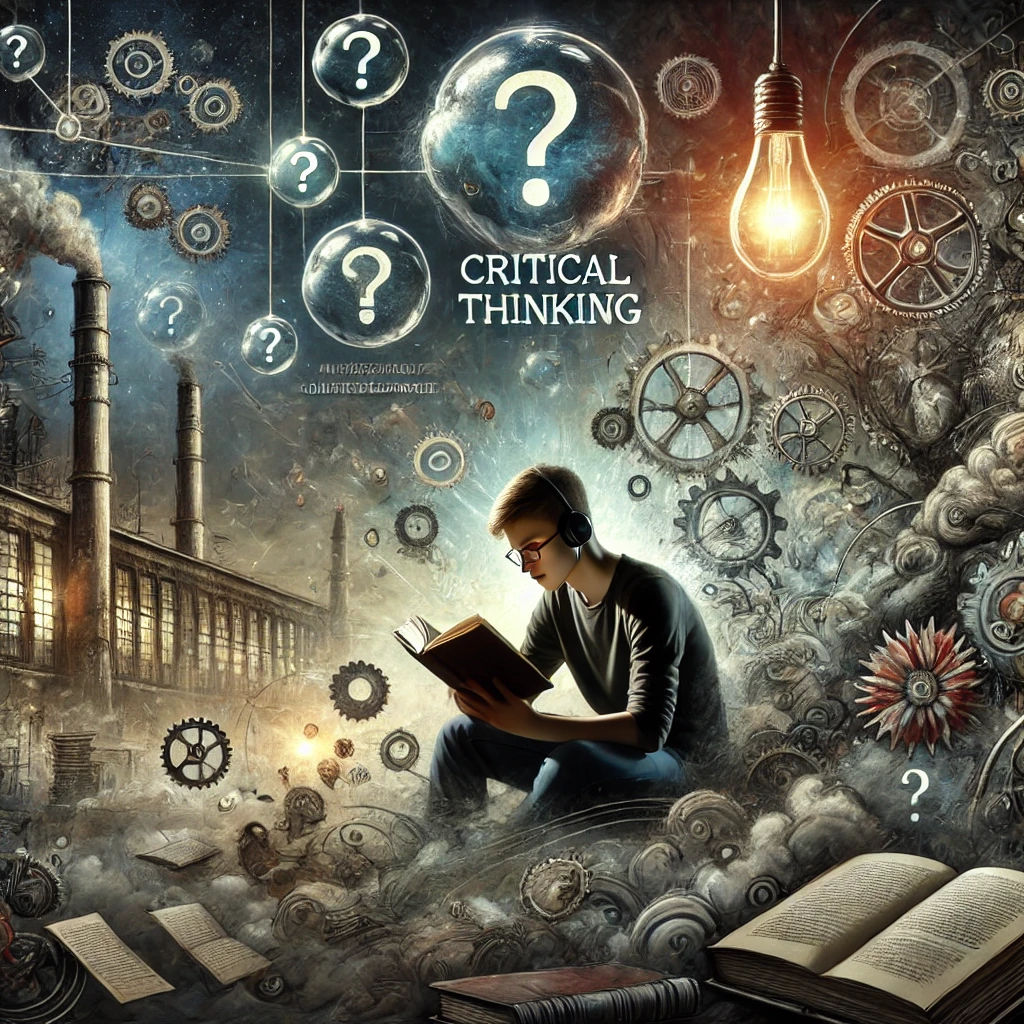
In recent decades, dystopian literature has gained increasing popularity among young people. This genre is characterized by depicting dark, oppressive futures that often reflect contemporary social, political, and environmental challenges. These types of stories not only entertain but also encourage deeper thinking, giving readers the opportunity to critically view the world around them.
Psychiatrists and trained professionals have recognized and acknowledged the influence of literature on cognitive and social changes, noting that imaginative novels elicit strong empathy and compassion in readers. Many professors have recognized the potential of these emotions to inspire action (Jerald, 2020).
Our article focuses on how dystopian literature influences young people’s activism and critical thinking. These stories often portray young people as characters who bravely confront oppressive systems, fighting for freedom and justice (Connors, 2016). This narrative can be particularly appealing to adolescents who are in the process of forming their identities and values.
These stories often centre around groups of young people or a prominent, capable young individual. The characters face problems similar to those of the readers, making it easy for them to relate. As Jerald noted in his 2020 article, these novels act as “emotional security blankets,” helping young people cope with the world’s problems.
Dystopian depictions also prompt readers to critically examine their present and the world around them. Young people, whose worldviews are still forming and are especially open to new perspectives, can easily recognize parallels and problems in their own society. This recognition is an important step towards developing social awareness, which is essential for active participation.
Stories are often framed in such a way that the world is full of rules and people have no decision-making rights (Connors, 2016). This creates a strong parallel with adolescence, when young people on the brink of adulthood feel suffocated by surrounding authority, as they are close enough to see its privileges but unable to enjoy them (Lewis, 2019). These dystopian stories appeal to adolescents, satisfying their desire for “power and control” (Connors, 2016).
From this, we can conclude that dystopian stories can serve as a reference point for young people, allowing them to associate their roles and problems and helping them view their society critically. For this to become more than a short-lived interest or lead to withdrawal, proper professional guidance is essential. This guidance can be provided within the education system or through youth work, incorporating the principles of critical pedagogy into the work of educators, facilitators, and youth leaders.
Utopian and dystopian narratives play a significant role both in education and in the broader social context. These genres can be powerful tools for developing critical thinking and social reflection. Through the analysis of utopian and dystopian works, adult helpers of the process have the opportunity to encourage young people to ask critical questions about social justice, freedom, and equality (Schucker, 2021). These narratives often contain situations and dilemmas that, when analyzed, lead young people to deeper thinking and debate.
The critical pedagogy approach helps young people understand social structures more deeply and develop their critical thinking skills through various practices and methods. This approach teaches them to recognize and challenge injustices and actively participate in promoting social change (Jerald, 2020).
Dystopian literature is particularly effective in examining ethical and moral questions. The depiction of dark futures and oppressive social systems helps students understand the consequences of political oppression, environmental destruction, and technological abuse. By reading these works, students confront the darker aspects of human nature and the potential for power abuse, fostering empathy and moral sensibility.
While much has been said about the positive impacts of dystopian literature, it is also important to understand and recognize its negative sides. The dark futures and environments depicted in these stories can often cause anxiety or fear in young readers. This effect can be intensified if the dystopian elements reflect real problems young people face in everyday life, such as climate change or social inequalities.
Like other forms of literature for young people, dystopian novels can reinforce normalized expectations regarding race, class, gender, and sexual orientation, marginalizing certain readers as a result (Connors, 2016). Although strong female protagonists are frequently featured and can be viewed positively, there are few novels with non-white, non-heterosexual protagonists.
Thus, dystopian literature can be an effective tool for professionals working with young people to develop their critical thinking and social awareness. For the positive effects to prevail, responsible guidance from professionals is essential to help young people appropriately interpret and process the messages of these stories. Therefore, like any other tool in these fields, it must be handled with great expertise, appropriate caution, and responsibility.
Bibliography:
- Connors, S.P. (2016). Becoming mockingjays: Encouraging student activism through the study of YA dystopia. The ALAN Review.
- Christopher Lewis (2019) The Spaces Between Dystopia and Utopia: Youth Perspectives on Identity, Education, and Resistance A Dissertation by Committee in charge
- Aysha Jerald (2020) Exploring the Relationship between Dystopian Literature and the Activism of Generation Z Young Adults American journal of undergraduate research
- Dr. Elizabeth Schucker (2021) Changed Agents: Cultivating Students’ Civic Identity Through Participation in a Social Justice-Themed Book Club as a Subversive Approach to Critical Literacy in Education
